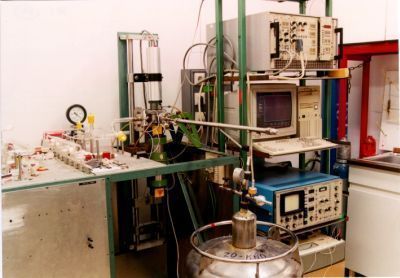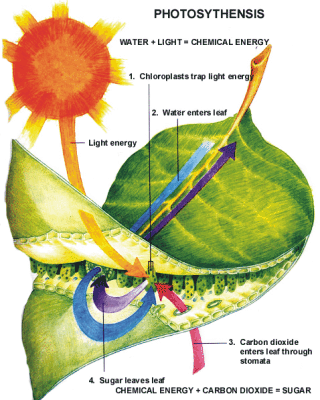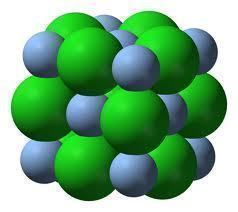Mossbauer Spectroscopy is a multipurpose technique that is applied in various scientific fields including Physics, Biology, and Metallurgy. It is most useful in deriving accurate data about the chemical, structural, and magnetic properties of a material. This technique exists today due to the discovery of the resonant absorption and recoil-less emission of nuclear y-rays, now known as the “Mossbauer Effect.” Rudolph Mossbauer discovered this when he was a graduate student at the Institute of Physics at the Max Planck Institute for Medical Research in Heidelberg, Germany. He first observed this effect in 1957 and was awarded the Nobel Prize in Physics in 1961.
The Mossbauer Effect
The best way to understand the Mossbauer Effect is by observing the energy that is responsible for the emission or absorption of a y-ray from a nucleus. Every time a free nucleus absorbs/emits a y-ray to conserve momentum, the nucleus recoils. In terms of energy, this can be represented as:
Eγ-ray = Enuclear transition – Erecoil
The recoil energy becomes zero inside a solid matrix as the effective mass of a nucleus is huge, and very little nucleus movement is required to conserve momentum. So, the energy for nuclei in a solid matrix can be represented as follows:
Eγ-ray = Enuclear transition
This phenomenon is the Mossbauer Effect, which leads to the resonant emission and absorption of y-rays. It therefore provides a means of examining the minuscule interactions in an atom’s nucleus and its surrounding environment.
Mossbauer Spectroscopy Instrumentation
A Mossbauer spectrometer consists of a source, sample, detector, and a drive that moves the source or the absorber. The drive usually moves the source away from the sample, with a linear variation in velocity with respect to time. This is done to ensure that the incident y-rays falling on the absorber have a wide range of energy, as a result of the Doppler Effect. There is also a type of spectrometer called the Synchotron Mossbauer, where the source is left stationary, and the sample is moved about. The detector’s position, with respect to the source and the sample, determines the geometry of the experiment. Transmission and back-scatter are usually the two modes used.
The energy scale used for Mossbauer spectra with respect to the x-axis is most commonly in terms of the source’s velocity, which is measured in mm/s. Iron (Fe) is the element that is most often observed through the Mossbauer Spectroscopy technique, as its isotope Fe57 is abundantly present, emits a low energy y-ray, and has an excited nuclear state of long duration, all of which are necessary for an observable Mossbauer spectrum. Some other elements that are commonly examined through this technique are Ruthenium, Iridium, Gold, Tin, Antimony, Europium, Gadolinium, Dysprosium, Erbium, Ytterbium, Neptunium, among others.
Mossbauer Spectra
The most important characteristics that are examined in the Mossbauer spectra are Isomer Shift (IS), Quadrupole Splitting (QP), and Magnetic Splitting (MS, also known as Hyperfine Splitting). The absorbing nucleus’ interaction with its surrounding environment produces the above-mentioned characteristics.
Applications of Mossbauer Spectroscopy
Isomer shift and quadrupole splitting, along with a hyperfine field in the case of magnetic phases, are useful in determining valence state and Fe site occupancy in a particular site and with an individual mineral. If it is a magnetically ordered phase, additional data about the values of the magnetic fields (measured in Tesla), can be used to identify certain phases. Mossbauer spectrometers are also employed in certain cases to identify minerals. They have limited scope here though, as multiple minerals can exhibit similar/same site geometries, leading to identical Mossbauer spectra.
Advantages of Mossbauer Spectroscopy
Mossbauer Spectroscopy combined with wet chemistry is the undisputed “gold standard” for quantitative determination of the valence state of iron in minerals. It is also the best technique to identify many different iron oxides. This technique is perfect for determining Fe atoms’ co-ordination numbers.
Disadvantages of Mossbauer Spectroscopy
Mossbauer Spectroscopy is a bulk technique that uses powders that are spread as a thin layer across an absorber to achieve a conducive experimenting environment. Advancements in detector technology now allow experiments to be carried out on small amounts of samples. Catherine McCammon at Bayreuth created another solution known as the Mossbauer Milliprobe. This modified version allows single grains of minerals to be studied in thin sections or as single crystals.
Most minerals on earth contain iron in an octahedral co-ordination, which means that they all exhibit similar Mossbauer characteristics. The spectra of minerals, such as pyroxene and mica, are indistinguishable from one another. Also, most minerals exhibit a range of Mossbauer characteristics as a function of cation substitution. The parameters also vary as a function of temperature, and the magnitude of this variation differs for each individual mineral composition. All these factors make Mossbauer Spectroscopy unsuitable for mineral identification, except in the case of iron oxides, whose magnetic properties act as useful diagnostic tools.




Follow Us!